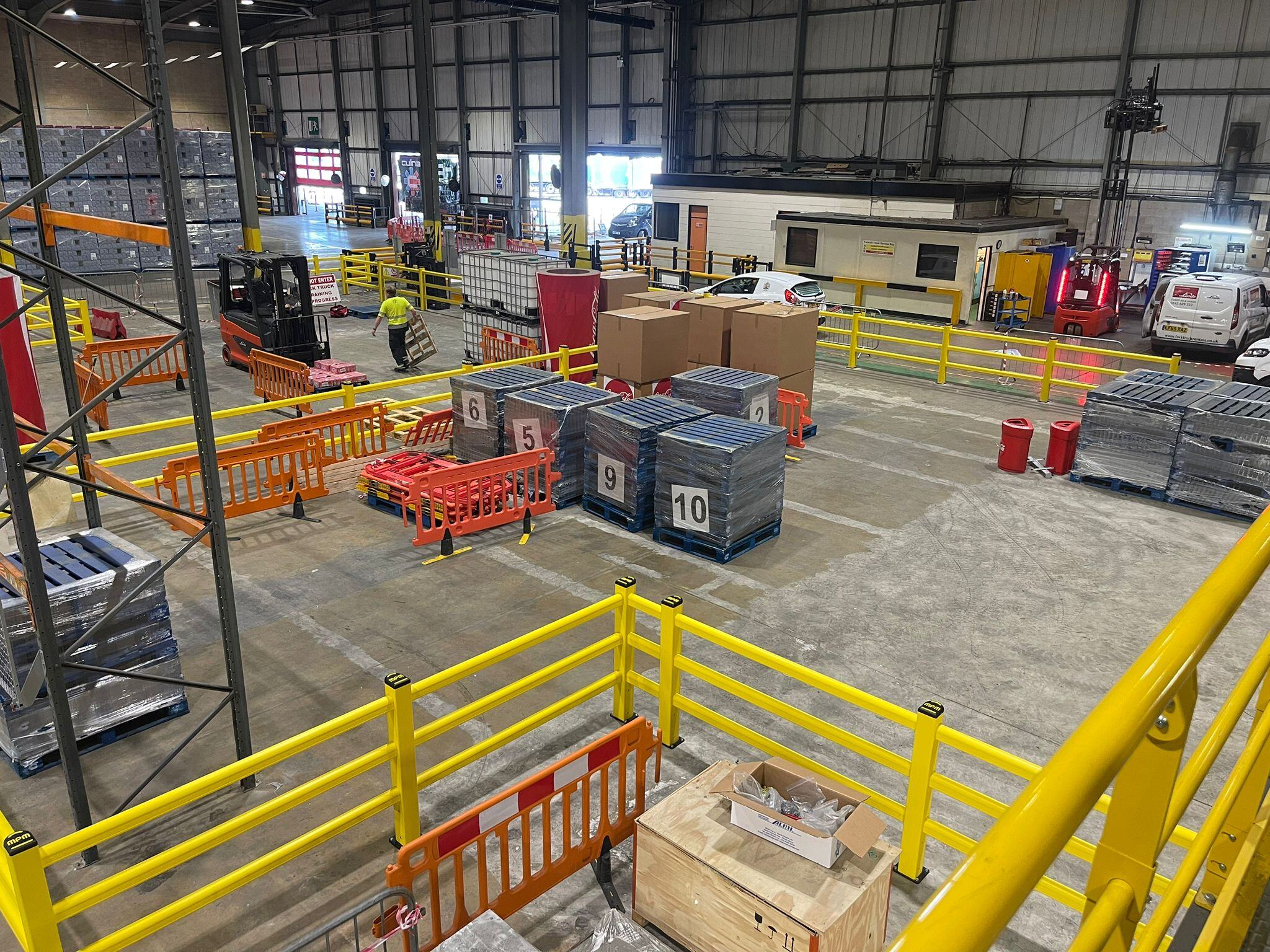What are the Top 5 Ways to Segregate Pedestrians from Material Handling Vehicles?
 By
Caleb Shaw
·
3 minute read
By
Caleb Shaw
·
3 minute read
A dilemma for most factories is “what is the best way to prevent a materials handling vehicle from colliding with a pedestrian?”. If you follow the health and safety executive, you’ll see that not a week goes by without a company being fined thousands of pounds due to an accident in the workplace. This article was written to help customers understand what the options are, as there is no one solution that suits everybody.
There are often times when the Forklift Truck (FLT) or other material handling vehicles have to cross over the path of a walkway. The traditional factory often has an old-style steel barrier to protect pedestrians from FLT’s. The more modern factories have adopted the safer polymer-based barrier systems for this particular application. This is especially important where the physical barrier is needed in a busy environment which is shared between vehicles and pedestrians, as the barriers offer impact protection without damage to the floors.
- Painted walkways.
In almost every factory, there are painted walkways to give operators and visitors direction of where they can and can’t walk. This also allows FLT drivers to understand where pedestrians will be walking. However, even with this solution, it is not the perfect solution as painted walkways have a finite lifespan, and there is a significant amount of preparation required to paint a new walkway. This time required to do this is often just not available due to production constraints. If a painted walkways is the solution for you then you will learn more about the best paint systems for your factory in this article.
The other problem with a painted walkway is it is a semi-permanent solution, which can cause a problem. Should you ever change the layout of your factory, you will likely be unable to fully remove the old walkways. We have been around many factories where the layout has been changed and you can see the evidence of the old walkways, despite their best efforts to remove them. This is because of an effort to find the most durable paint to withstand FLT movements, which has therefore resulted in it being incredibly difficult to remove when needed.
- Line-marking tape
With the advance in adhesive technologies, line marking tapes have become very effective as a visual aid to segregate pedestrians from other traffic. They act in a very similar way to a painted walkway, as they are lines stuck onto the floor, and whilst these may be easier to rip-up if needed, they are likely to leave a sticky adhesive behind, which then gets dirty. This means you can still see where the tape has been placed in your factory, even when its gone. This does however, like most products, depend on the quality of the product you buy. A high-quality line marking tape will last a long time and actually can be removed leaving no residual evidence. If you ever want to rearrange the layout of your factory, Clarity’s Floor Marking Tapes may be a good option for you.
- Self-adhesive walkways
Until I joined Clarity, I had never heard of such a thing as a self-adhesive walkway. And then I found that there are many factories using these walkways because of the versatility, speed of application, and the best part of all, when they wear out, you simply replace it! If you haven’t heard about self-adhesive walkways, they are a fully printed tape at the width of your desired walkway, therefore giving the illusion of a painted walkway.
If you have a dynamic product range or you are unsure of your future requirements within your factory, this product may turn out to be the best option for you.
- Projected solutions
In many factories, it is not possible to have a physical barrier between the Vehicles and the pedestrians, therefore this means that a virtual barrier is needed. One of the most effective virtual barriers is a projected solution. This can be LED or even a Laser projected line. Unlike other segregation options that are stuck or bolted onto the floor, projectors are mounted to the ceiling, making them easily portable and removable without a trace. If you are interested in the projected solutions, or the problems you may have with them click here.
- Polymer Barriers
As I mentioned earlier on, many factories have now implemented polymer barriers in their factory to replace their old metal barriers. This is because, whilst metal may be able to withstand larger impact ratings, the energy transferred when an FLT impacts it, is transferred into the bolts in the floor, rather than the barrier flexing to take the impact. This results in significant damage to the floor, the FLT and potentially harms the pedestrian in the process. Because of this, there are many polymer barrier ranges which have been developed to protect assets and people in every different circumstance. Read more about the pricing of these barriers here.
There are actually a lot of different ways in which pedestrians can be segregated from FLT’s and Material Handing Vehicles. In this article we have offered you a few different options you could consider to keep your pedestrians safe in your factory, and have hopefully given you an insight into which product may be best for your factory. The good news is, we can offer all of the product we have listed above. To get in touch for a free quotation click the button below.



